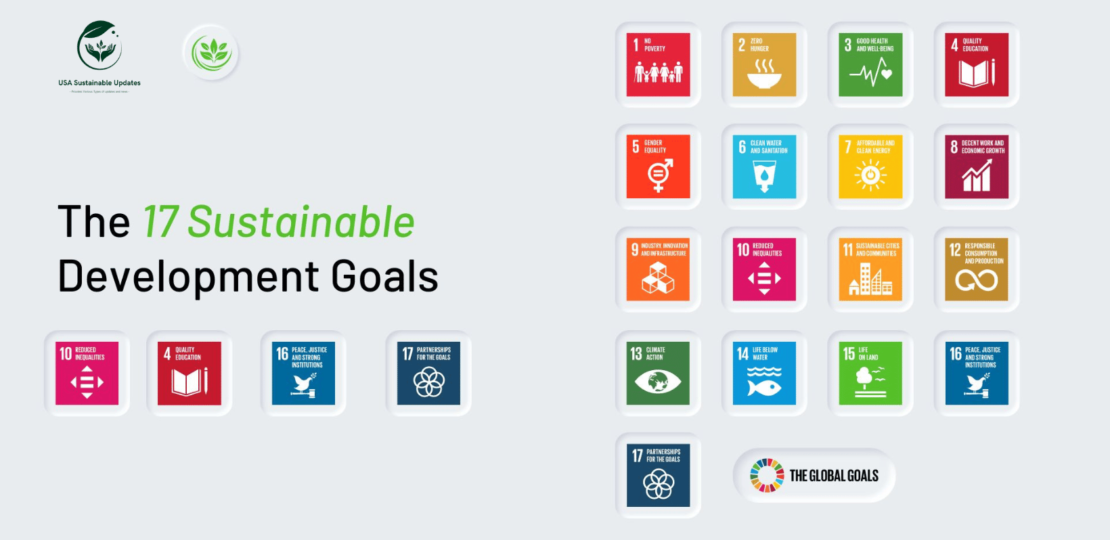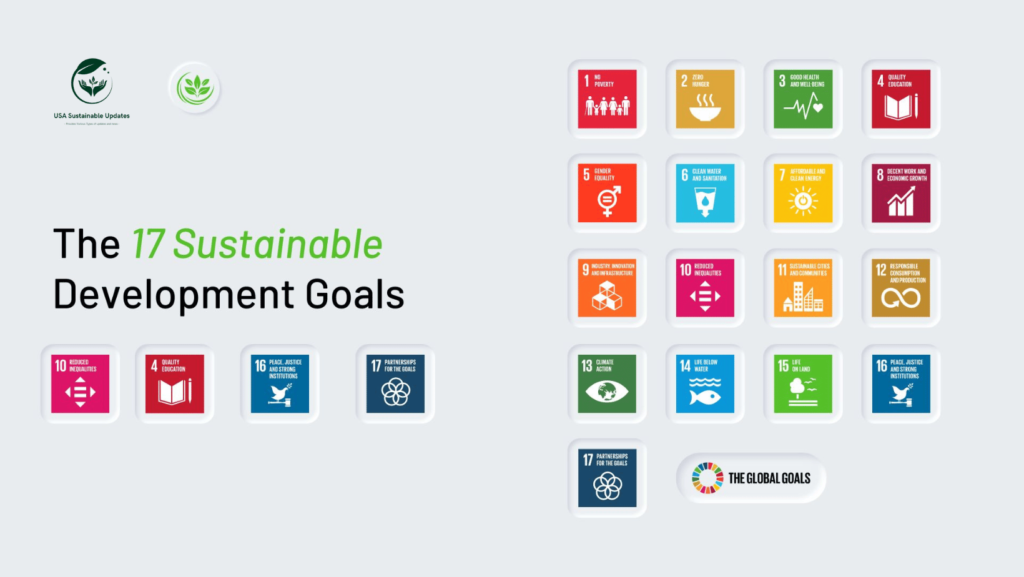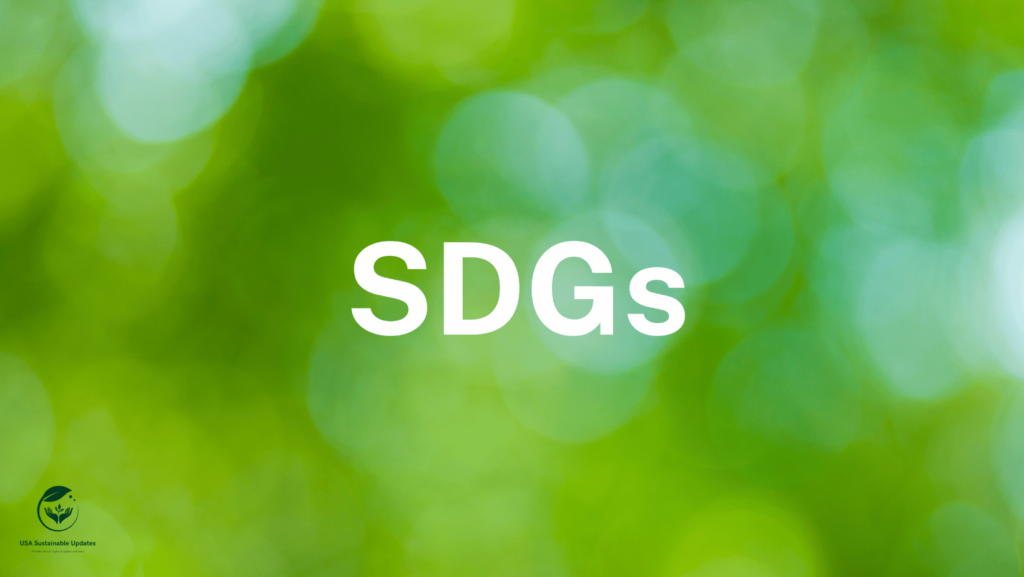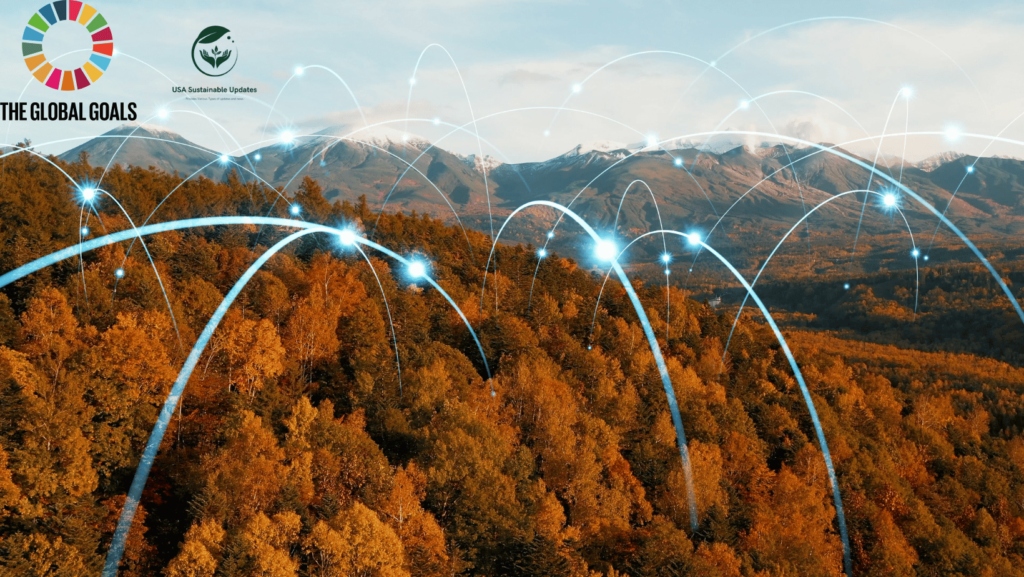
Introduction
17 SDGs: In a world facing various global challenges, the United Nations has laid out a comprehensive roadmap for creating a better and sustainable future for everyone. This ambitious plan, known as the 17 Sustainable Development Goals (SDGs), aims to address pressing issues such as poverty, hunger, climate change, inequality, and more. In this article, we will delve into each of the SDGs, exploring their significance, objectives, and the collective effort needed to achieve them. Let’s embark on this transformative journey towards a better world.
1. No Poverty – Eradicating Poverty, Empowering Lives
The first SDG, No Poverty, strives to eliminate extreme poverty in all its forms by 2030. This goal emphasizes the need to implement social protection systems, ensure equal access to resources and opportunities, and provide support to the most vulnerable populations. By tackling poverty, we can unlock the potential of millions and create a more inclusive and sustainable society.
2. Zero Hunger – Ensuring Food Security and Nutritious Diets
Zero Hunger aims to end hunger, achieve food security, and promote sustainable agriculture. With over 690 million people still suffering from chronic hunger, this goal urges us to take decisive actions to improve food production, distribution, and consumption. By embracing sustainable agricultural practices and reducing food waste, we can ensure that no one goes to bed hungry.

3. Good Health and Well-being – Prioritizing Health for All
Ensuring healthy lives and promoting well-being for all at all ages is the core essence of this SDG. By focusing on disease prevention, access to quality healthcare, and mental health support, we can foster healthier societies. Investing in healthcare infrastructure and research is vital to overcoming health challenges and improving the overall quality of life.
4. Quality Education – Empowering through Knowledge
SDG 4 envisions inclusive and equitable education for all. By providing quality education, we can empower individuals to reach their full potential and contribute meaningfully to society. This goal emphasizes the need for accessible education, relevant learning opportunities, and enhanced teacher training to ensure no one is left behind.
5. Gender Equality – Empowering Women and Girls
Gender Equality is a fundamental human right and a crucial SDG. It calls for an end to all forms of discrimination and violence against women and girls. Achieving this goal involves promoting equal access to education, economic opportunities, and leadership roles. By empowering women, we create a more just and prosperous world for all.
6. Clean Water and Sanitation – Preserving a Precious Resource
Access to clean water and adequate sanitation is a basic human right, yet millions lack these essentials. SDG 6 seeks to ensure availability and sustainable management of water and sanitation for all. By promoting responsible water usage and implementing effective water treatment systems, we can protect this invaluable resource and promote better health outcomes.
7. Affordable and Clean Energy – Embracing Renewable Solutions
With energy demand on the rise, transitioning to sustainable and clean energy sources is imperative. SDG 7 advocates for universal access to affordable, reliable, and modern energy. Embracing renewable energy technologies such as solar, wind, and hydroelectric power will not only combat climate change but also foster economic growth and improve living conditions.

8. Decent Work and Economic Growth – Fostering Inclusive Prosperity
Promoting inclusive economic growth and decent work opportunities is at the heart of SDG 8. By supporting job creation, entrepreneurship, and sustainable economic practices, we can reduce poverty and inequality. Fair labor practices and social protection systems will enable individuals and communities to thrive in a rapidly changing global economy.
9. Industry, Innovation, and Infrastructure – Driving Progress Forward
SDG 9 emphasizes the importance of resilient and sustainable infrastructure and industrialization. By investing in innovation, research, and development, we can foster technological advancements that benefit society. Improving infrastructure will not only drive economic growth but also enhance connectivity and accessibility for all.
10. Reduced Inequality – Building an Inclusive Society
Inequality remains a significant barrier to sustainable development. SDG 10 aims to reduce inequalities within and among countries. By implementing policies that address economic disparities, promoting social inclusion, and empowering marginalized groups, we can create a fairer and more cohesive global community.
11. Sustainable Cities and Communities – Creating Livable Environments
As urbanization accelerates, creating sustainable cities and communities becomes essential. SDG 11 focuses on making cities inclusive, safe, and resilient. By investing in public transport, green spaces, and affordable housing, we can create livable environments that promote well-being and reduce our ecological footprint.
12. Responsible Consumption and Production – Nurturing a Circular Economy
Sustainable consumption and production patterns are crucial for conserving natural resources and protecting the environment. SDG 12 calls for responsible production processes, waste reduction, and the promotion of sustainable lifestyles. Embracing a circular economy model will lead to more efficient resource utilization and reduced environmental impact.
13. Climate Action – Combating the Climate Crisis
Climate change poses an existential threat to our planet and its inhabitants. SDG 13 urges countries to take urgent action to combat climate change and its impacts. By transitioning to low-carbon economies, embracing renewable energy, and preserving forests and biodiversity, we can safeguard the planet for future generations.
14. Life Below Water – Preserving Marine Ecosystems
Healthy oceans are vital for sustaining life on Earth. SDG 14 aims to conserve and sustainably use marine resources. By reducing marine pollution, protecting coastal ecosystems, and addressing overfishing, we can preserve the biodiversity of our oceans and ensure the well-being of communities that depend on them.

15. Life on Land – Safeguarding Terrestrial Biodiversity
Protecting terrestrial ecosystems and biodiversity is the focus of SDG 15. Halting deforestation, restoring degraded lands, and combatting desertification are essential for ensuring the health of our planet. By preserving natural habitats and promoting sustainable land management, we can safeguard biodiversity and mitigate the effects of climate change.
16. Peace, Justice, and Strong Institutions – Fostering a Just Society
Promoting peaceful and inclusive societies is at the core of SDG 16. It calls for the establishment of effective, accountable, and inclusive institutions that uphold the rule of law and protect human rights. By reducing violence, corruption, and promoting access to justice, we can create a world where everyone can live in peace and security.
17. Partnerships for the Goals – Collaboration for Impact
Achieving the SDGs requires a collective effort from governments, businesses, civil society, and individuals. SDG 17 emphasizes the importance of fostering partnerships and mobilizing resources to implement sustainable development initiatives effectively. By working together, we can overcome global challenges and create a more prosperous and equitable world for all.

Conclusion
The 17 Sustainable Development Goals present a comprehensive blueprint for building a sustainable future for humanity and the planet. From eradicating poverty and hunger to combating climate change and promoting equality, these goals require collective action and unwavering commitment. As individuals and as a global community, we hold the power to transform our world for the better. Let us unite and strive towards achieving these goals, leaving no one behind on this journey to a brighter and more sustainable future.
Frequently Asked Questions (FAQs) about the 17 Sustainable Development Goals (SDGs)
1. What are the 17 SDGs?
The 17 Sustainable Development Goals (SDGs) are a set of global objectives adopted by the United Nations in 2015. They provide a universal call to action to end poverty, protect the planet, and ensure prosperity for all by 2030.
2. Why are the SDGs important?
The SDGs are essential as they address some of the most pressing challenges facing humanity and the planet. By focusing on areas such as poverty, hunger, education, climate change, and equality, they aim to create a more sustainable and equitable world.
3. How can I contribute to achieving the SDGs?
Individuals can contribute to the SDGs in various ways. You can start by raising awareness about the goals, adopting sustainable lifestyle practices, supporting organizations working towards the SDGs, and engaging in community projects that promote social and environmental well-being.
4. What role do governments play in achieving the SDGs?
Governments play a crucial role in implementing policies and regulations that support the SDGs. They are responsible for allocating resources, promoting sustainable practices, and creating an enabling environment for businesses and individuals to contribute to the goals.
5. How can businesses contribute to the SDGs?
Businesses can contribute to the SDGs by aligning their operations with sustainable practices. This may involve adopting environmentally friendly production processes, ensuring fair labor practices, supporting social initiatives, and contributing to local communities.
6. What is the timeline for achieving the SDGs?
The timeline for achieving the SDGs is set for 2030. This gives the global community a 15-year window to work collectively towards meeting the goals and creating a more sustainable and prosperous future.
7. How are the SDGs interconnected?
The SDGs are interconnected and mutually reinforcing. Progress in one goal often leads to progress in others. For instance, achieving gender equality (SDG 5) can positively impact poverty reduction (SDG 1) and promote economic growth (SDG 8).
8. Are there any challenges in achieving the SDGs?
Yes, there are several challenges in achieving the SDGs. These include limited financial resources, political will, and conflicts in certain regions. Additionally, addressing complex issues like climate change and inequality requires concerted efforts from all stakeholders.
9. How can we measure progress towards the SDGs?
To measure progress, countries and organizations use various indicators and metrics aligned with each goal. Regular reports and assessments help track advancements and identify areas that require more attention and support.
10. What happens if we don’t achieve the SDGs?
Failing to achieve the SDGs can lead to severe consequences, including increased poverty, environmental degradation, and social unrest. It is crucial to address these challenges collectively to secure a sustainable future for generations to come.
11. Can technology play a role in achieving the SDGs?
Absolutely! Technology can play a transformative role in achieving the SDGs. Innovations in renewable energy, digital connectivity, data analytics, and healthcare can significantly contribute to progress towards the goals.
12. How can education support the achievement of the SDGs?
Education is a fundamental component in achieving the SDGs. It empowers individuals with knowledge and skills, promotes critical thinking, and raises awareness about sustainable practices. Educated populations are more likely to actively contribute to the goals.
13. Are there any success stories related to the SDGs?
Yes, there have been several success stories related to the SDGs. Many countries and organizations have made significant progress in poverty reduction, access to clean water, renewable energy adoption, and gender equality. These successes demonstrate the potential of collective action.
14. Can the SDGs be adapted to different countries and contexts?
Yes, the SDGs are designed to be adaptable to different countries and contexts. While the goals are universal, each nation can tailor their strategies and approaches based on their unique challenges, resources, and priorities.
15. How can we ensure that no one is left behind in SDG implementation?
Ensuring that no one is left behind requires a commitment to inclusivity and equality. Policymakers and stakeholders must focus on reaching marginalized and vulnerable populations, providing them with equal opportunities and resources to thrive.
16. How can youth and young people contribute to the SDGs?
Youth and young people play a crucial role in shaping the future. They can contribute to the SDGs by advocating for change, engaging in community initiatives, promoting sustainable practices, and participating in policy discussions.
17. Can the private sector collaborate with governments to achieve the SDGs?
Yes, collaboration between the private sector and governments is vital for SDG implementation. Public-private partnerships can mobilize resources, leverage expertise, and accelerate progress towards achieving the goals.
By working together, we can make the 17 SDGs a reality and create a more sustainable and prosperous world for everyone.
for more information you can visit our Blog, Thanks for reading.

RELATED POSTS
View all


